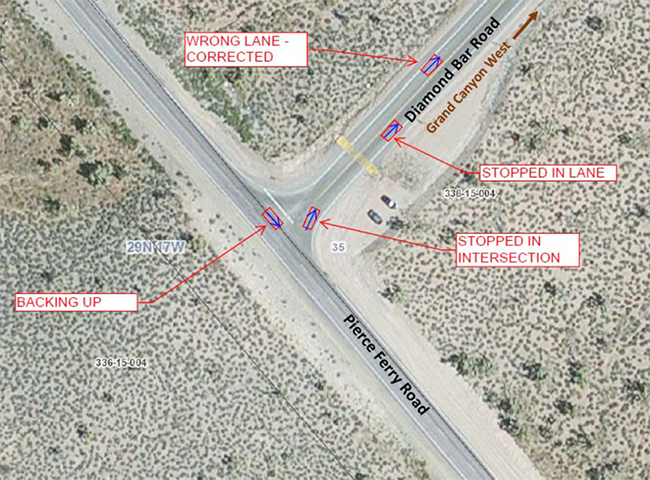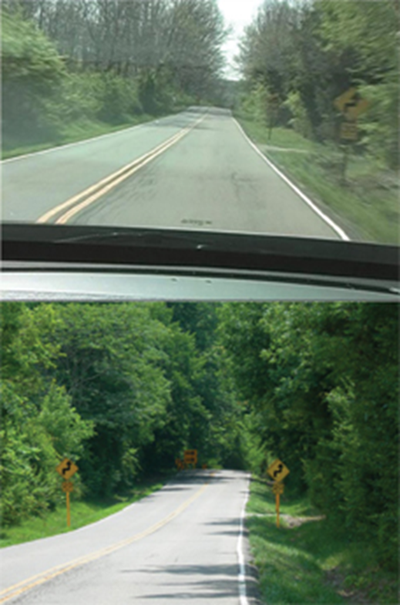What was the safety issue, problem, or gap?
Diamond Bar Road in Mohave County, Arizona provides public road access to Grand Canyon West, site of the internationally renowned Grand Canyon Skywalk on the Hualapai Indian Reservation, attracting approximately 700,000 visitors annually. Subsequent to Diamond Bar Road reconstruction by the Hualapai Tribe and Bureau of Indian Affairs, two (2) fatal, head-on crashes occurred on the facility, approximately 0.7 miles from its intersection with Pierce Ferry Road, which provides access to U.S. 93 and Interstate 40 servicing Grand Canyon West visitor traffic. Each crash involved unimpaired drivers from Ireland and Australia who encroached into the opposing lane of travel upon negotiating the first horizontal curve encountered on Diamond Bar Road.
What were the key challenges that needed to be addressed before the new practice could be implemented?
The key factors focused on identifying the unique driver experiences relating to the crashes and crash circumstances including:
- Inexperience in driving United States roads with oncoming traffic passing on the driver's side, and
- Driver behavior as a tourist subject to acute distractions such as scenery, communication with other vehicle occupants, and/or reading directions/maps.
The County's Engineering Division performed a detailed field investigation and traffic engineering report based on intensive two-day observations of inbound tourist traffic to Grand Canyon West during the active holiday season. It found—in seven hours' time over two morning ingress periods—30 separate instances of drivers stopping in the road, backing, making a U-turn, or turning/entering into the opposite lane of travel before immediately correcting. Figure 1 indicates example traffic maneuvers witnessed during the investigation.

Figure 1. Example Vehicle Maneuvers Substantiating Tourist Driver Behavior
Describe the new practice.
The Mohave County Traffic Safety Committee reviewed and endorsed the traffic engineering study findings and recommendations, and the County subsequently installed the following devices in January 2013:
- An oversize 48” x 48” W6-3 Two-Way Traffic Warning Sign installed on both sides of Diamond Bar Road facing traffic entering Diamond Bar Road.
- A white thermoplastic through arrow in both Diamond Bar Road travel lanes adjacent the warning signs.
- Total expense including material and labor costs at the County's burdened rate is $871.00.
Key accomplishments, including roadway safety improvements
January 2015 marks two full years Mohave County has maintained its Wrong-Way Driver Warning Devices. Its success is attributed to zero crashes post-improvement throughout the 14-mile Diamond Bar Road relative to crash type and crash causal factors attributed to the two fatal crashes prompting this Mohave County safety project.
What benefits were realized as a result of the practice?
The devices take a low-tech form but directly address human factors based needs identified in the County's traffic engineering study driving device identification and implementation.
Contact
Michael P. Hendrix, P.E., County Administrator
3715 Sunshine Dr.
Kingman, AZ 86409
928-757-0910


